Decorative plaster in the bathroom
For an ignorant person, the option of using decorative plaster in the bathroom looks quite problematic. Firstly, very often the decorative plaster design of the room is confused with liquid wallpaper, and secondly, it is widely believed that decorative plaster in the bathroom will cost a lot of money, and is usually used in rooms with an ideal microclimate.
In reality, liquid wallpaper and decorative plaster differ in characteristics, although they have much in common. In addition, such decor is successfully used for finishing facades and exterior walls of a building for relatively little money.

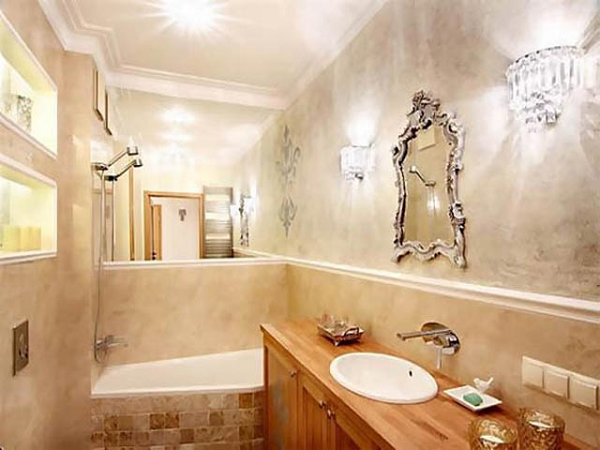
For your information! Many of the decorative finishes that do not have a surface layer of primer, varnish, wax mastic, are capable of releasing a large amount of dust onto the surface.
The main disadvantage of this decor is the ability to absorb and retain a significant amount of condensate.
Decorative plaster for the bathroom
Any of the varieties of plaster decor listed above perfectly passes water vapor and thereby regulates the humidity in the room. But the conditions in the bathroom are radically different from the microclimate in other rooms, so the most “breathable” plaster is not able to deal with extremely high levels of humidity. Therefore, the best option would be to use waterproofing varnishes and mastics. In this sense, the most suitable option can be considered a finish with imitation of natural polished stone.
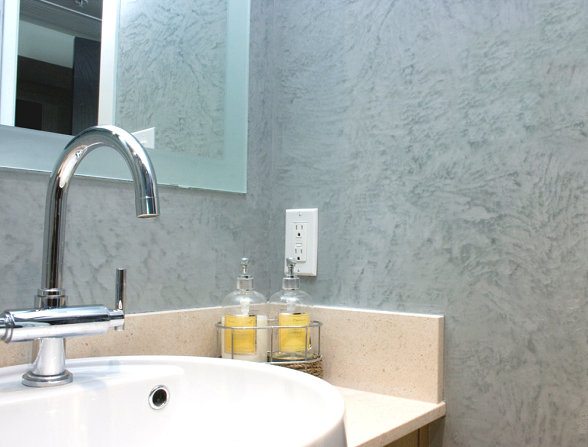
Decorative marble finish
Certain types of Venetian plaster, imitation of finishing stone species are the best suited for use in the bathroom. Such decorative plaster in the bathroom with your own hands can be laid within a few days, while most of the work will be devoted to preparation and final finishing.
The polished surface of imitation marble or calcite is the best fit for the bathroom interior. In some cases, a combination of marble walls and antique interior items can create a very beautiful and organic bathroom design, as in the photo.
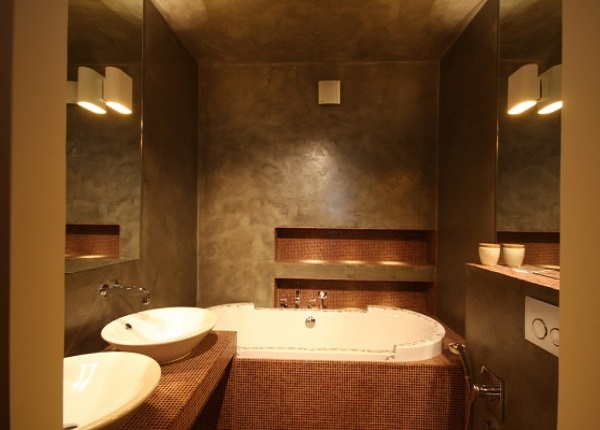
If you try to recreate a similar decorative wall finish using tiles, plastic, washable wallpaper, it will be much more difficult and costly to achieve such an effect, it is likely that it is impossible.
Marbled decorative design will require very high-quality alignment of the walls, since all flaws will be clearly visible on the polished surface: bumps, humps, bumps, crooked corners. Therefore, with the help of finishing putty and building level, the surface is brought to the desired quality. In addition, before applying the decor, the walls are treated twice with a deep penetration primer. After 4-5 hours, you can start applying the main layer.
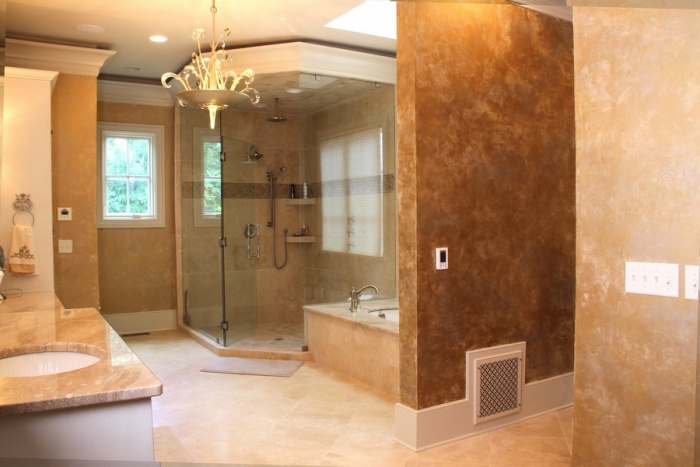
The most crucial stage will not be the formation of a marbled structure with a spatula and plaster mass, but the correct selection of varnish with toner and wax mastic, which will subsequently polish the finish. The process of finishing artificial marble is relatively simple, but requires experience and practical skills.
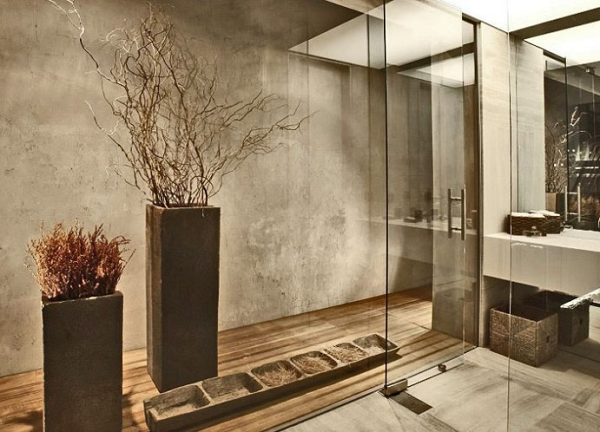
Such decorative plaster can be cleaned of dirt with a soft sponge and brush. The lacquer coating is significantly inferior in hardness to tiles, therefore, when carrying out any work on repairing a bathroom, the surface of the walls must be covered with a thick plastic film or cloth.
Structural and Venetian artistic plasters
Natural stone imitation is not the only option for decorating a bathroom. Very interesting design solutions can be used on the basis of Venetian plaster with elements of artistic drawing. Most often, such a painting is done in its own style, corresponding to the overall design of the room. Such decoration of the bathroom with decorative plaster allows you to realize your design project, taking into account the individual characteristics of the room.
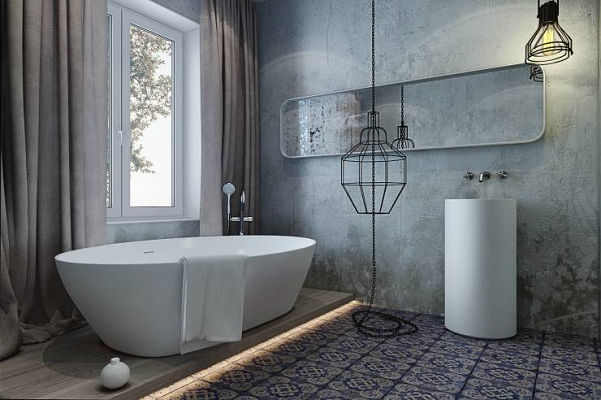
When choosing a color scheme, it is not necessary to focus only on stone imitation or artistic design projects. There are many varieties of decorative plaster cladding with a pronounced structure that can be successfully applied in the bathroom. These can be options with fillers from rolled sand, ground marble, metal powders, microfibers of natural or synthetic materials. In addition to the standard method of applying such plaster, you will need to add one more operation - applying a decorative protective coating.







